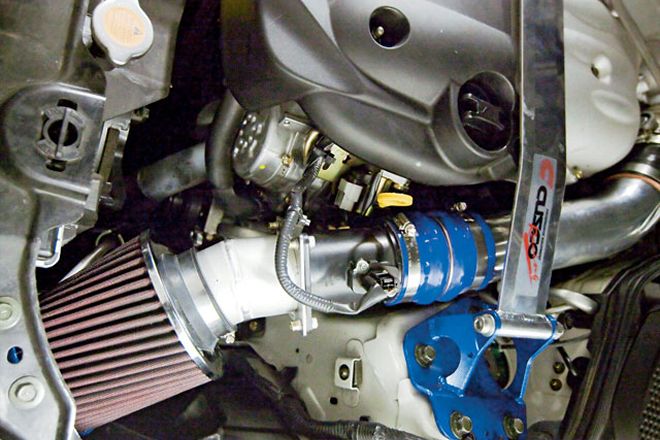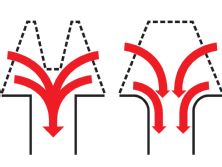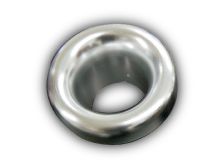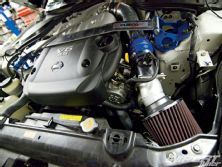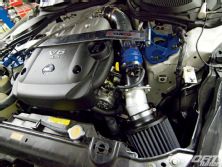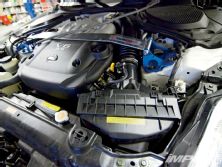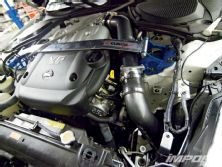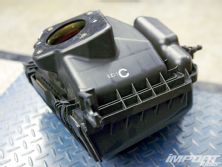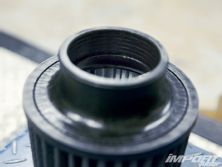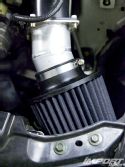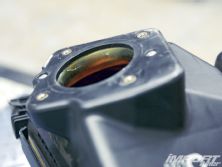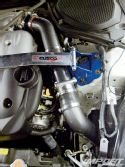Regular readers will recall last month's testing of two Motordyne bolt-ons that successfully proved Helmholtz resonance can be used to increase exhaust gas scavenging and help your ride put out a few extra ponies compared to other aftermarket offerings. What we didn't get into was how problems on the intake side of our test-car equation nearly negated our power gains altogether, giving rise to the possibility that fitting your car with the wrong intake might bring power to below stock levels. Before we were finished with one tuning uncertainty, we had unwittingly unearthed another:
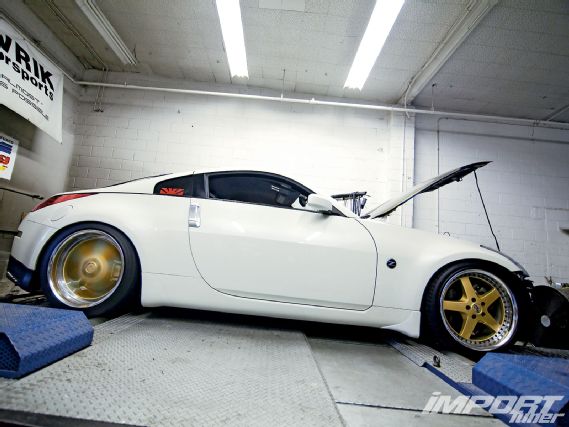 |
Can Certain Performance Air Intakes Decrease Power? - Fact Or Fiction
|
Can Certain Performance Air Intakes Decrease Power? - Fact Or Fiction
The prevailing hypothesis is that cone-filter-equipped aftermarket intakes have a tendency spin incoming airflow into a vortex. If an engine's mass airflow sensor (MAFS) is positioned too close to a cone filter and doesn't feature a screen or grid before the sensor element to diffuse airflow (the 350Z one doesn't), the incoming intake charge can either strike it at a faster-than-normal velocity, tricking the MAFS into overestimating airflow, or flow around it, causing the MAFS to underestimate airflow. In the case of the MAFS reading too much airflow, too much fuel would likely be injected as a result, making for rich air/fuel ratios (AFRs) and decreased power. If the MAFS reads too little fuel, lean AFRs could occur, causing knock-sensor-tripping pre-ignition, and again, a loss of power.
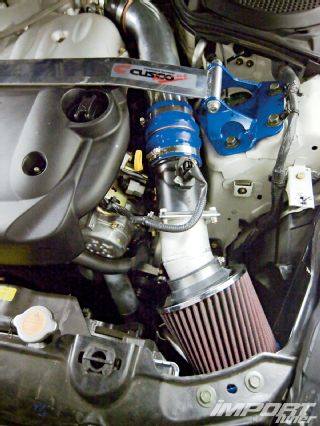 |
Can Certain Performance Air Intakes Decrease Power? - Fact Or Fiction
|
Can Certain Performance Air Intakes Decrease Power? - Fact Or Fiction
"Another possibility," explained Tony Collette, Motordyne lead-man and innovator of last month's successful ART products, "is that certain short-ram intakes experience some high-speed air separation if they don't feature a built-in velocity stack." Like our hypothetical vortex spinning airflow into a fast, concentrated stream, the separation Tony's referring to occurs when air enters an intake with high speed and angle, and without the aid of a velocity stack to provide a smooth transition into the intake tubing, can't adhere to the walls of the tubing and causes air to condense into a fast-moving stream which could also prompt a MAFS to overestimate airflow. Since our AFRs became increasingly rich as engine speed increased, and the power loss was mostly top-end, "I'd bet that's what's happening," hypothesized Tony.
If either of these theories proved to be true, our logic was that cold-air intakes with more tubing would provide enough room for airflow to straighten out before contacting MAFSs, avoiding the problems described above. We also theorized the same would hold true for the Z's factory induction equipment, since its flat-panel air filter would induce air in a more linear fashion, avoiding the vortex and air-separation issues. To test, we rounded up examples of all three systems-our suspect short-ram intake from previous testing, the car's OEM induction stock, and an AEM Cold Air intake-and strapped Ken's '04 350Z down to the rollers of Mavrik Motorsport's Mainline dyno in Fullerton, CA, to power test it with each configuration in place. AFRs were monitored throughout.
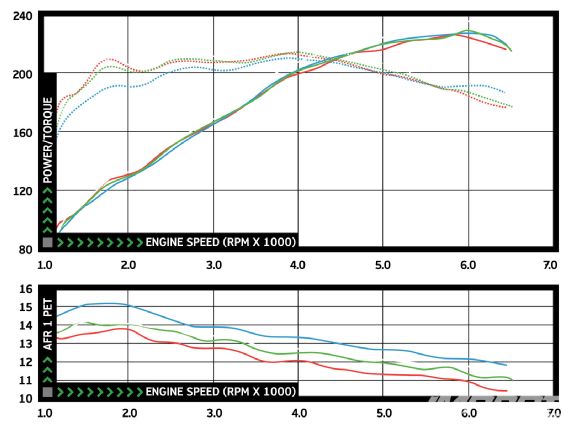 |
Can Certain Performance Air Intakes Decrease Power? - Fact Or Fiction
|
Can Certain Performance Air Intakes Decrease Power? - Fact Or Fiction
Immediately noticeable with the short-ram intake was that its filter features a "twisted" design-something we've seen other manufacturers tout as a benefit that spirals airflow for increased power. Also apparent was that its inverted cone-designed as a part of the filter's housing to direct airflow into intake tubing-stopped short of the filter's inlet into the tubing, which could allow for air to sneak in perpendicularly from the filter's sides and cause the separation Tony theorized. More importantly, neither the filter nor its intake tubing featured a velocity stack.
Our AEM filter did incorporate a velocity stack in its design, and coincidentally fit onto the tubing of our short-ram system. To prove or dispel Tony's air separation theory, we installed it on the short ram tubing for a round of testing.
Sizing up the car's stock equipment, we noticed that like our AEM filter, it also utilized a velocity stack at the start of intake tubing.
Our final test of the day was with the complete AEM Cold Air intake installed.
It's important to note that while on the dyno-with hood propped, bumper removed, and supplementary fans blowing at full-blast-changes in intake charge temperature between short-ram and cold-air alternatives are insignificant.
Eyeing its restrictive design and panel filter's comparatively small surface area, it's no surprise the 350Z's stock intake brought the lowest average power and torque. What's interesting, however, is that as rpm increased, the benefits of the short-ram diminished, even falling below stock levels in the upper realm of the Z's powerband, as AFRs fluctuated and fell into far richer territory than with the stocker-clear evidence that while providing more airflow, our short-ram intake was doing so in a way the MAFS didn't like. Factoring in the benefits to both power/torque output and AFR found with simply swapping the short-ram's native filter with AEM's velocity-stack-equipped one, we had evidence in support of air separation interfering with MAFS function. Finally, installing AEM's long-tube Cold Air intake vastly improved power and torque, and brought AFRs into leaner territory than the short-ram, at much smoother rates.
The Verdict:
While the amount of air flowing into a carbureted or MAP-sensor-equipped engine may be the only point to mind when selecting its aftermarket intake, how that air flows is every bit as important to a MAFS-governed engine. While we're still not sure if it was air vortices or air separation that tricked our 350Z into miscalculating mass air flow (or both), we do know two things: It was happening, and switching from our previous short-ram intake to AEM's long-tube Cold Air unit increased peak output by nearly 12whp, and gained power and torque from idle to redline. They say the proof is in the pudding; we say it's in the testing.
 |
Can Certain Performance Air Intakes Decrease Power? - Fact Or Fiction
|
Can Certain Performance Air Intakes Decrease Power? - Fact Or Fiction

